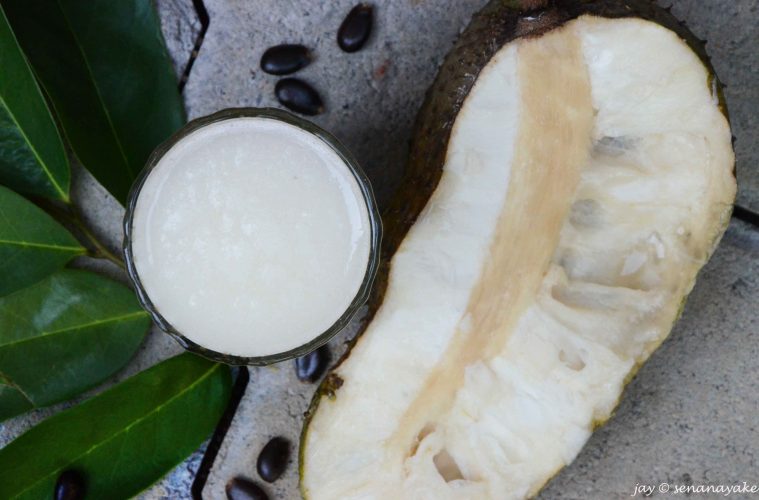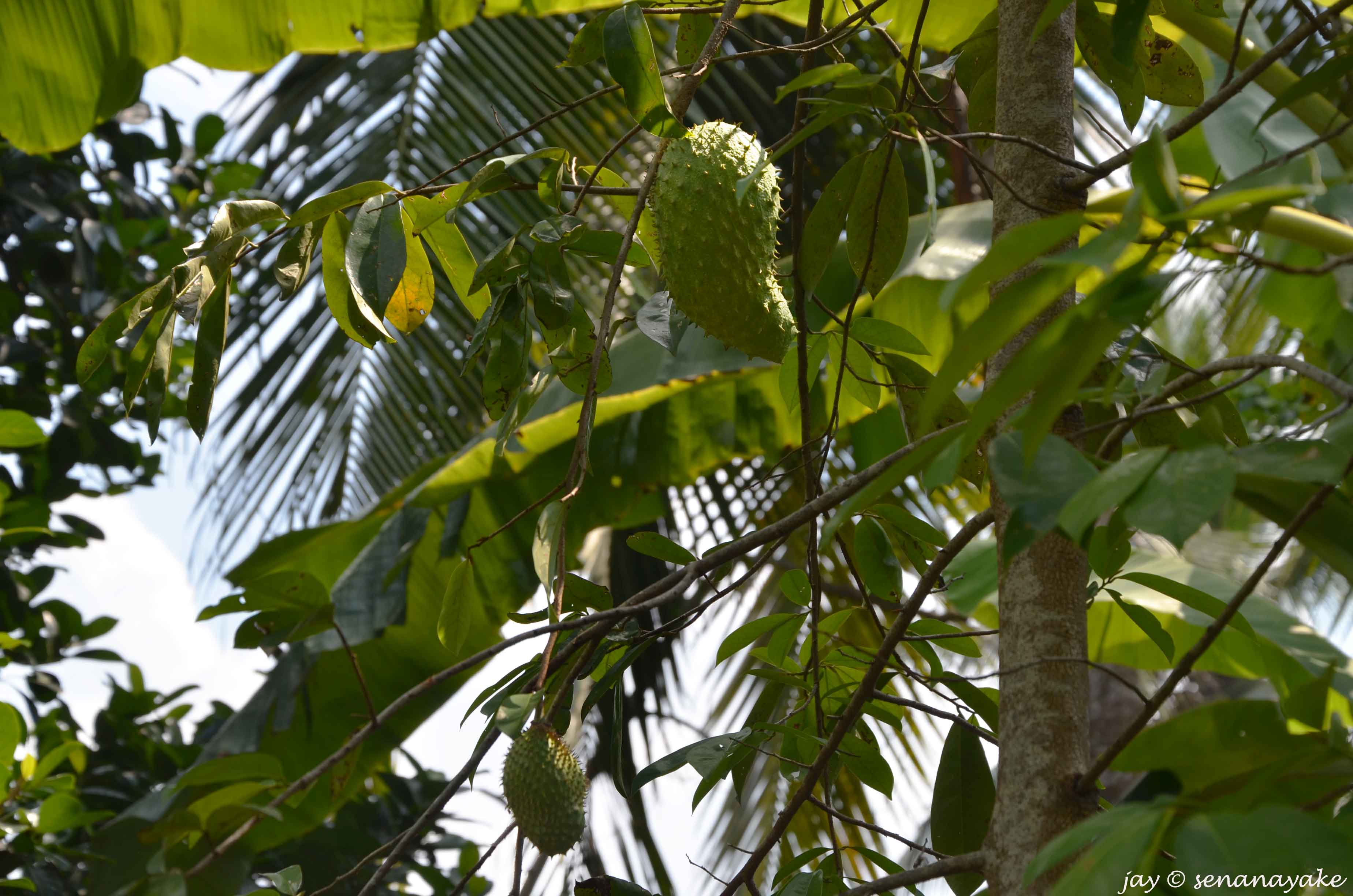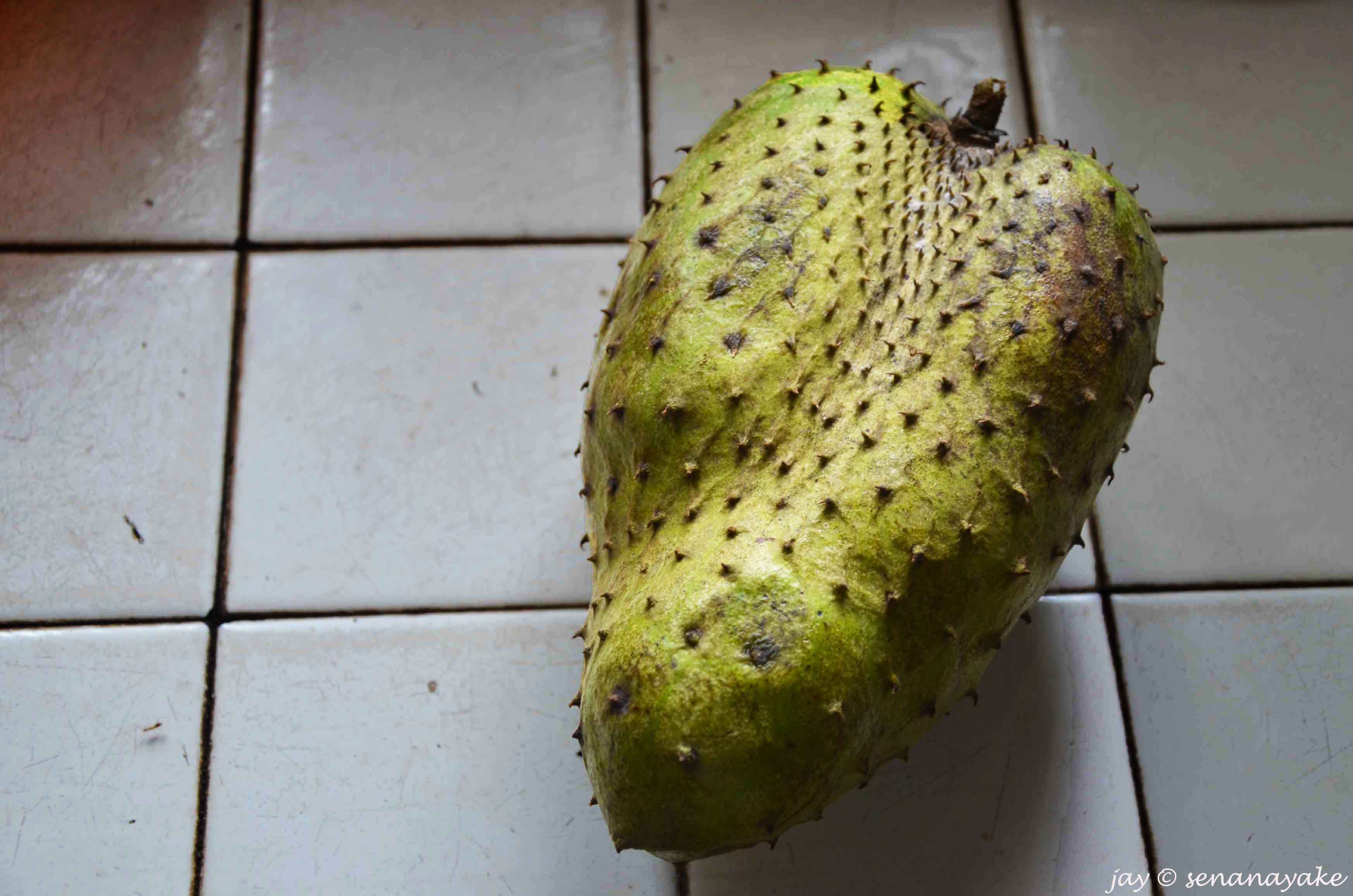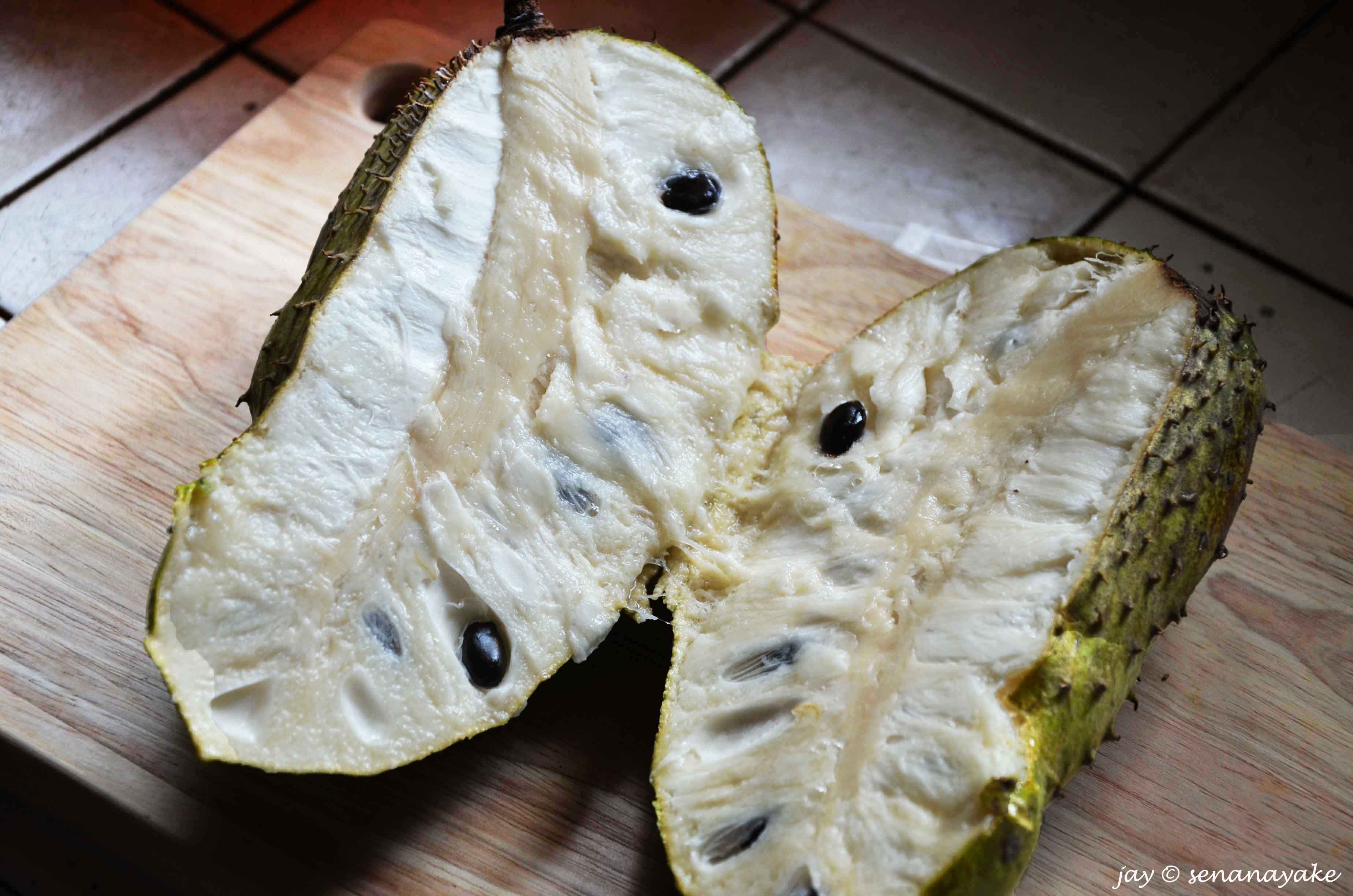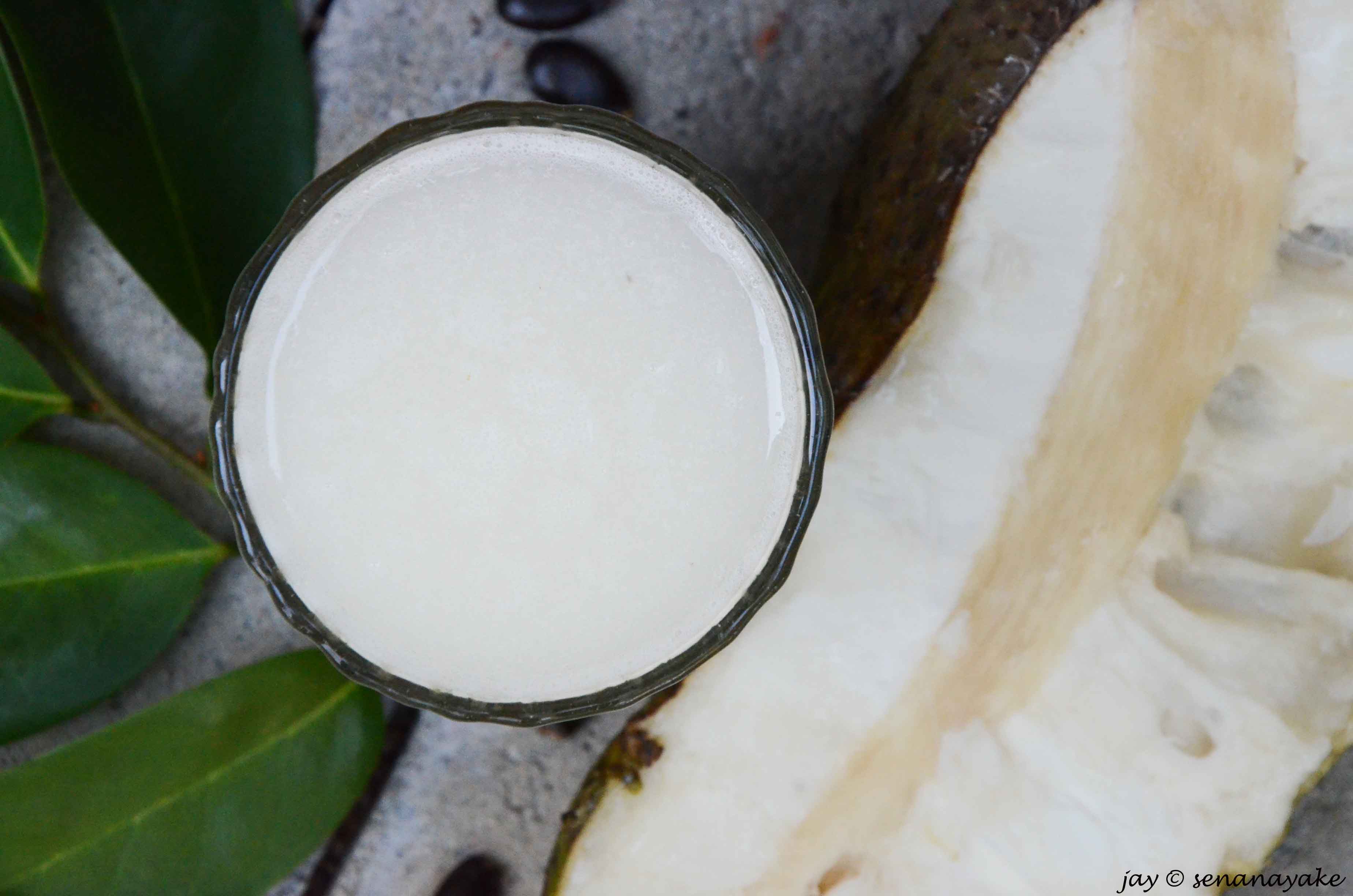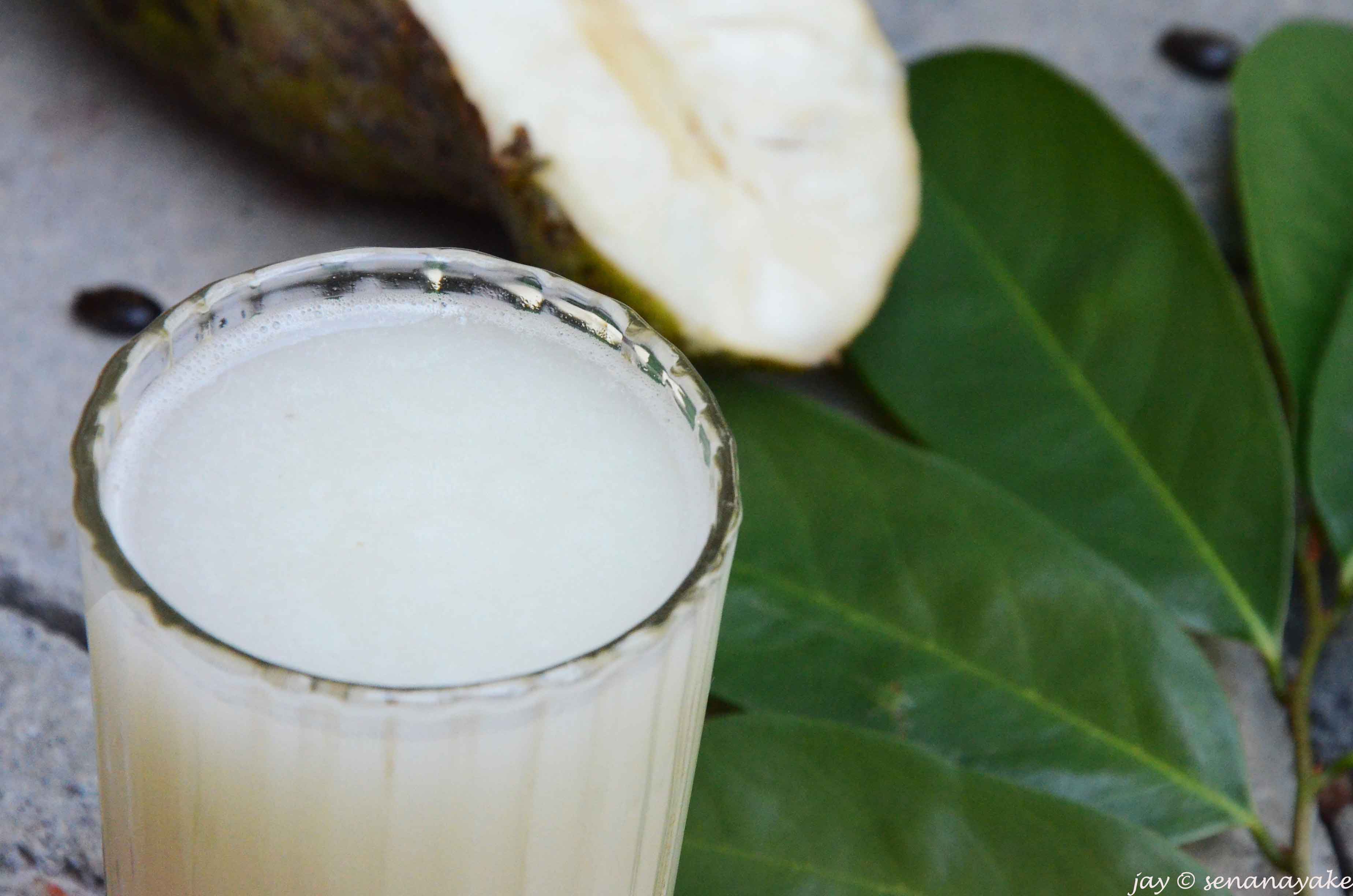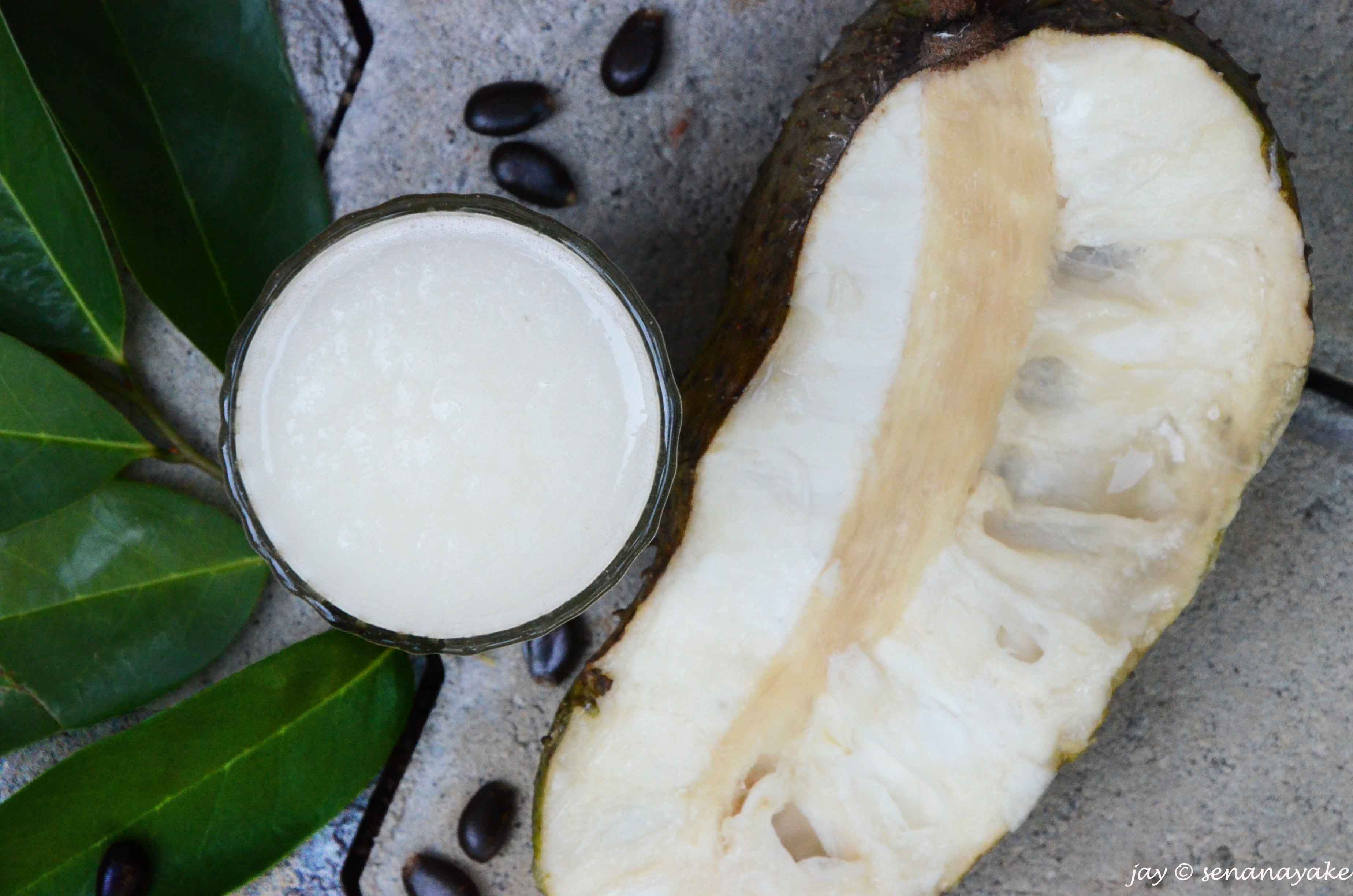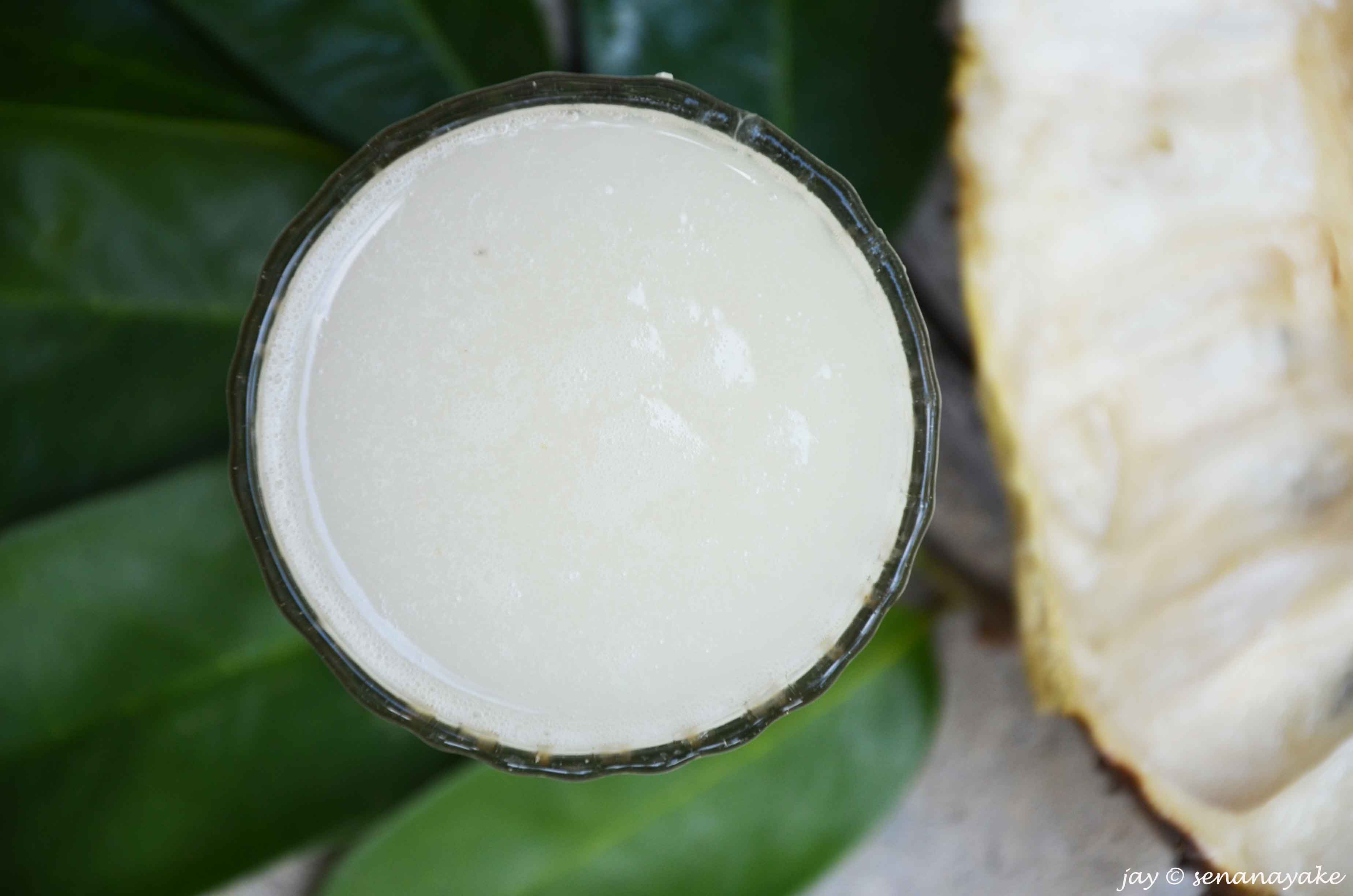Marriage has changed everything. My surroundings, the people around me, the routines I’ve religiously followed, the schedules, my sleep……the list goes on. It has made me shift residence too. I am a city girl. I like my comforts nearby, supermarkets easily reachable, products I use readily available. I’ve been whisked away to live in the elsewhere where the urbanization has not yet fully reached – needless to say, to my great dismay.
But living in the wilderness (ok, I may be exaggerating just a teensy bit) has its advantages too you see. For example, the large sprawling garden offers plenty of room for planting and growing while also already teeming with many fruit trees at random corners.
One morning the Father in Law, the sweet soul that he is, comes in proudly bearing two of these magnificent fruits, adding that they had been ripened on the tree. My eyes bulged out of their sockets. I had not seen any graviola trees in the vicinity – not that I’d recognize one if I saw anyway. My open mouthed amazement was answered with claims that there in deed, are quite a few graviola trees all over the garden. Huh! Who knew!
And so there was soursop juice every day. For a shamefully lazy boy like the hubby creature, his parents knowing him well, made juice out of it every morning. (Yes, he’s still very much the mama’s boy). Me, I liked to eat it. Cut it in half, digging my hands right into the soft, juicy flesh, tearing out chunks while the sticky juice ran down my elbow, stuffing them in my mouth and later, spitting out the smooth, black seed, licking my fingers. Bliss.
This large thorny fruit with a thin, green skin can grow up to a foot long. When ripe, the fruit becomes soft but remains firm, its light green skin speckled with black and reveals luscious white flesh when cut. The snow white flesh hides shiny black and sizeable seeds that is usually not eaten. The flesh of the fruit is a fine balance between the acidic and the sweet – and not many fruits get this combination exactly right.
It is said that the soursop immigrated from the West Indies and South America introduced by the Portuguese and the Spanish who colonized the lands. Now happily settled in to the local conditions, anoda grows almost anywhere without discrimination but are known to be the sweetest when grown at higher elevations. Deriving from the genus annona, it is easy to see where the anoda got its Sinhala name from. There are over dozens of varieties in the world and Sri Lanka only houses 4 of them – katu anoda (annona muricata or soursop), matti anoda (annona reticulate. custard apple or bullocks heart,), weli anoda (sweetsop, sugar apple, annona squamosa), and the cherimoya (annona cherimola), none of which are commercially grown.
But today we talk about the katu anoda, the largest of its kind!
Having made itself at home in these tropical climes, the Anoda has settled into the everyday life of the ordinary Sri Lankan. Although not readily available in the market, anoda has become a rare and an expensive commodity whereas in the rural areas, this is often not the case. Soursop is used in local Ayurveda for creating cures for various ailments. Rich in antioxidants and Vitamin C, it is known as a heart-friendly fruit and rumour also has it, that it acts as a potent cancer killer, more potent than chemotherapy itself!
Of course, this has not been proven scientifically, at least to my knowledge, which is very limited on this subject. We do get a lot of people coming into get the leaves and the bark of the graviola tea however, for this treatment and that. Which should account for something.
In Sri Lanka, the leaves of the graviola are used in ‘kenda’, or the Sri Lankan herbal broth, ground and juiced, mixed with rice gruel and this is said to prevent urine infections and kidney stones. The leaves are known to have calming properties and in the Netherlands Antilles, the leaves are said to be sewn into pillow cases for a restful sleep. In Africa, young shoots of the soupsop are also used as cures for diarrhea, indigestion, catarrh, dysentery, coughs and gall bladder ailments. Used to aid child birth, the leaves are also known to carry with them cooling properties. Skin conditions such as eczema and rheumatism are known to be soothed with poultices made with the soursop leaves and swollen feet are known to benefit from soursop leaf compresses.
So you see, this tasty treat is not only absolutely delicious, it’s good for you as well.
Anoda is best had in its simple form – scooped out and eaten with hand. But for those who are lazy to do even that, here is a simple something that they can get someone who cares enough to do it for them.
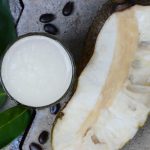
- Serving: 3 large servings
Anoda juice
Ingredients
- Soursop - 2 cups, scooped, deseeded
- Milk - 2 cups
- Water - 1 cup
- Salt - A dash
- Sugar - Per taste (optional)
Instructions
- Combine all ingredients in a blender until well blended.
- Cool and enjoy!
Yes, as easy as that.
The yield is a semi-thick liquid that is quite chunky and you can strain this out if you want, although I recommend you not to. If left aside, the solids will float at the top while the liquid will settle at the bottom, so take care to mix well with a spoon before drinking. The sweet coolness just glides down your throat laced with a tartness that is refreshing at the same time thrills your throat. The milk dims down the intensity of the flavour concentrated on a single mouthful and embraces your tongue in a creamy – piquant embrace – a sweet and tart melody that will sing to your soul. Have a gulp – or an entire jug of it. It won’t still be enough.
Useful tips
Always, always use ripened soursop for drinks and for eating as fruit. Don’t be afraid of a little blackened skin. It’s supposed to be like that.
Next time you are eating a soursop, don’t just throw the seeds away. Dig up a little soil and plant them. You’ll be seeing fruits in several years :)

